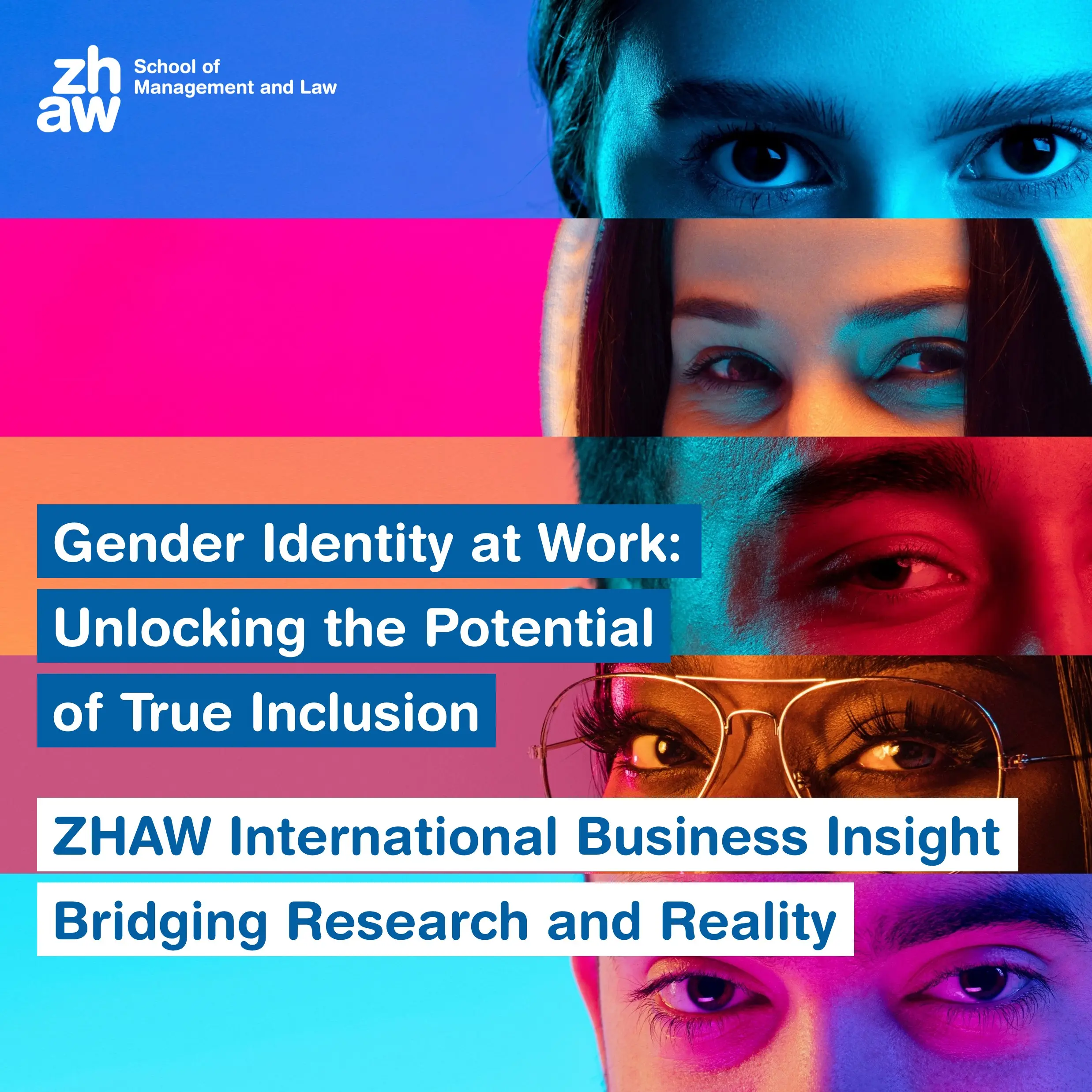ZHAW International Business Insight: Unlocking the Potential of True Inclusion
How inclusive are Swiss companies when it comes to integrating trans and non-binary individuals? In the current edition of the research communication series "ZHAW International Business Insight", we present a new study on gender identity in the workplace, conducted under the direction of a ZHAW researcher.

The new empirical study “Inklusive Geschlechtsidentitätspraktiken in Organisationen der Schweiz” / “Inclusive gender identity practices in organisations in Switzerland”, conducted by the Swiss Diversity association under the direction of Dr. Daniela Frau from the ZHAW School of Management and Law and funded by BKW, provides valuable insights into current practices, challenges, and untapped potential for fostering a gender-inclusive workplace.
Background: Discrimination and Invisibility
In Switzerland, trans and non-binary individuals still frequently face discrimination, isolation, and exclusion in the workplace. Many feel compelled to hide their gender identity as a means of protection, while also being at higher risk of unemployment. Despite increasing societal awareness, the inclusion of these groups remains a marginal topic in diversity management.
The Study: Focus on Inclusive Practices
This exploratory study is based on an online survey of senior managers, HR professionals, and diversity specialists, primarily from large organizations in the German-speaking region of Switzerland. Its aim was to analyze which practices are being implemented to promote the inclusion of trans and non-binary individuals. Three categories were examined:
- Non-discrimination practices (e.g., objective recruitment processes, inclusive communication),
- Accountability practices (e.g., advisory services, targeted skills development),
- Resource practices (e.g., financial and time investments in diversity programs).
A total of 139 people participated in the survey, with 106 completing all questions. The findings reveal that organizations with a dedicated diversity strategy implement significantly more measures across all three categories, creating a noticeably more inclusive workplace climate.
Findings: Progress and Barriers
One of the study’s key findings is that gender-inclusive practices are most successful in organizations with a strategic commitment to diversity. However, despite their positive effects, the topic of gender identity ranks low in the priorities of many organizations. Traditional leadership structures, political resistance to gender-inclusive language, and limited diversity management resources hinder broader implementation.
Non-discrimination practices, such as objective evaluation and recruitment processes, are more commonly adopted than measures aimed at fostering behavior or competencies, such as training or advisory services. Accountability and resource practices often require specialized expertise as well as financial and time investments—barriers that many organizations struggle to overcome.
Practical Implications
The study provides a valuable framework for organizations seeking to expand their diversity initiatives. A clear diversity strategy, paired with greater prioritization of gender identity issues, can not only enhance inclusion but also empower trans and non-binary employees to realize their full potential. This benefits not just the individuals but also the organization’s overall performance.
Outlook
The study underscores that gender-inclusive measures are not only a social imperative but also an economic advantage. However, further research is needed, particularly on how these practices impact organizational sustainability and financial performance. Given the current political and media discourse in Switzerland, advancing this topic remains a challenge.
The Swiss Diversity study makes it clear: while progress has been made, much work remains to be done to make Swiss workplaces truly inclusive. With focused strategies and a broader embrace of diversity, organizations can take a decisive step into the future.